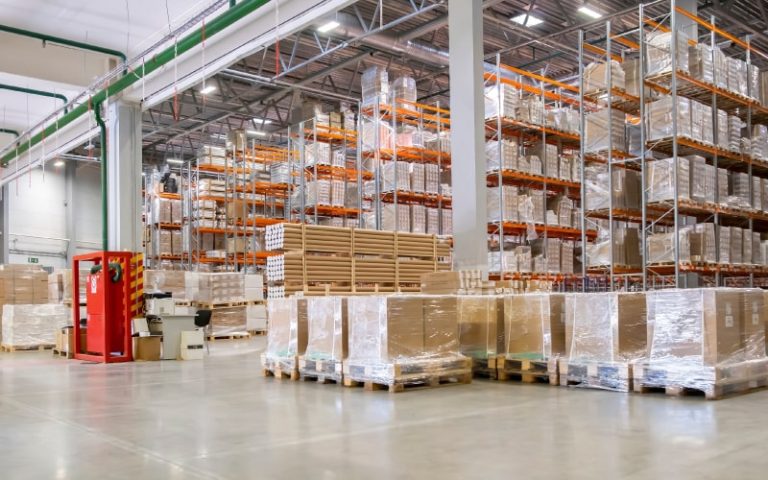More than 80% of warehouses globally do not have automation. That’s changing. With the need for faster fulfillment and material handling, rising costs, and tighter-than-ever margins, it’s becoming increasingly difficult to operate efficiently when you’re doing things manually.
Things are changing rapidly.
Organizations spent more than $26 billion in 2024 on warehouse automation, and that spending is projected to increase by more than 15% a year through 2034.
But what is warehouse automation and how can it help your operation run smoother and more efficiently? Let’s break down the basics and whether it’s a good fit for your facility.
What Is Warehouse Automation?
Warehouse automation is the marriage of machines and technology, performing tasks that have traditionally required manual labor. It includes just about everything from storing, moving, picking, packing, or sorting products.
The goal? Minimize manual labor, reduce errors, and streamline warehouse operations.
Automation can be as simple as a powered conveyor belt that reduces travel time or as complex as a fully autonomous warehouse equipped with robotics, AI, and real-time data systems.
What Is an Automated Warehouse System?
An automated warehouse system is a combination of integrated technologies and equipment, creating a system designed to handle repetitive warehouse tasks. These systems may include:
- Automated Storage and Retrieval Systems (AS/RS): Computer-controlled systems that place and retrieve goods from storage automatically.
- Conveyor and sortation systems: Material handling equipment that moves goods through the warehouse efficiently.
- Automated guided vehicles (AGVs) or autonomous mobile robots (AMRs): Automated equipment to transport items without human intervention.
- Warehouse control systems (WCS): Software to coordinate and optimize movement across the facility.
Together, these components create a synchronized environment that powers faster throughput, real-time inventory visibility, and reduced human error.
Types of Warehouse Automation
There are different systems designed to handle various aspects of operations. Here are a few common categories:
Goods-to-Person (GTP) Systems
These systems deliver products directly to workers, eliminating time spent walking or searching for items. Examples include carousels and robotic picking systems.
Conveyor Systems
Conveyors move goods from point A to B in a facility, reducing the need for manual transport. They’re ideal for high-volume operations and can be customized for weight, speed, and space.
Sortation Systems
Automated sorters identify and direct items to the appropriate location based on barcodes or RFID tags. They’re especially useful for e-commerce and distribution centers handling large order volumes.
Robotic Systems
From palletizing robots to mobile robots navigating the warehouse floor, robotics can handle tasks with precision and consistency, especially in hazardous or high-volume environments.
Automated Storage Solutions
Pallet shuttles, vertical lift modules (VLMs), and high-density racking systems automate storage and retrieval to maximize vertical and horizontal space.
The Benefits of Warehouse Automation
Implementing warehouse automation offers several benefits that can drive immediate and long-term returns:
- Improved accuracy: Automated systems reduce picking and shipping errors, which translates into fewer returns and better customer satisfaction.
- Faster fulfillment: Orders can be processed more quickly thanks to optimized workflows and reduced bottlenecks.
- Better space utilization: High-density automated storage systems free up floor space and improve organization.
- Higher labor efficiency: Automation supports your workforce by handling repetitive tasks, allowing staff to focus on higher-value activities.
- Enhanced safety: Systems can minimize heavy lifting and repetitive motion, reducing injury risks and worker fatigue.
Is Warehouse Automation Right for Your Facility?
Automation isn’t just for massive fulfillment centers. Even smaller warehouses can benefit from strategic automation. Is it right for you? Consider these factors in your decision:
- Are there bottlenecks, errors, or excessive labor hours built into your warehouse operations?
- Is your team struggling to keep up with demand?
- Are staffing shortages a consistent challenge?
- Do you need to improve speed and cycle times?
- Are you looking to improve margins?
Before installing any new automated system, there are a few critical steps to take:
- Identify inefficient movement, picking paths, and storage issues.
- Match your needs with the right solutions, whether that’s conveyors, racking systems, robotics, or a combination of technologies.
- Determine whether automation upgrades require engineer-stamped drawings and city permits.
- Involve experienced professionals to minimize downtime during teardowns or move-ins.
Warehouse automation isn’t cheap. Mistakes can be extremely costly. Working with experts ensures your system is safe, compliant, and optimized for peak performance for the long term.
Modernize Your Warehouse with Automation
So, what is warehouse automation? At its core, it’s about using technology to improve warehouse operations—making them faster, safer, and more accurate. And what is an automated warehouse system It’s the backbone that makes that transformation possible.
If you are considering updating or automating your warehouse, you should talk to the material handling experts at Conesco Storage Systems. Request a consultation with warehouse experts who can help with equipment, design, permitting, and installation.



